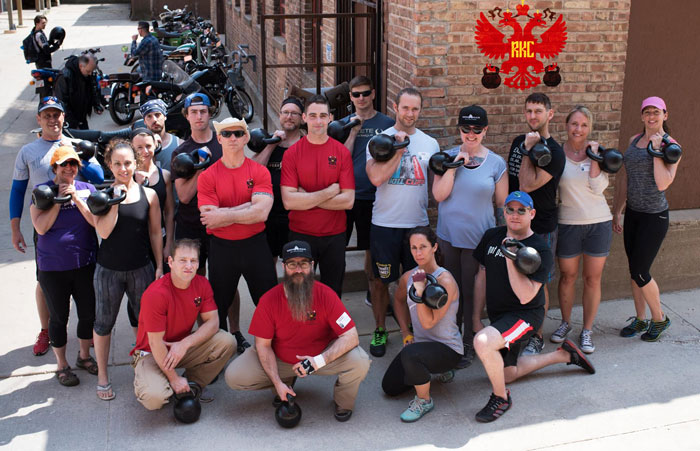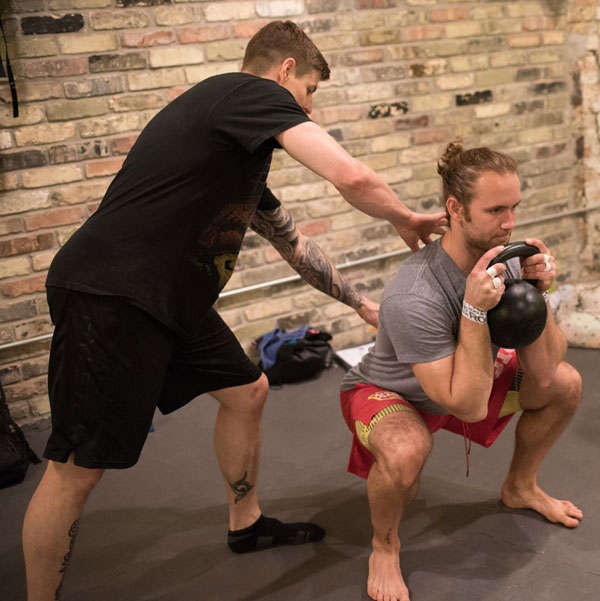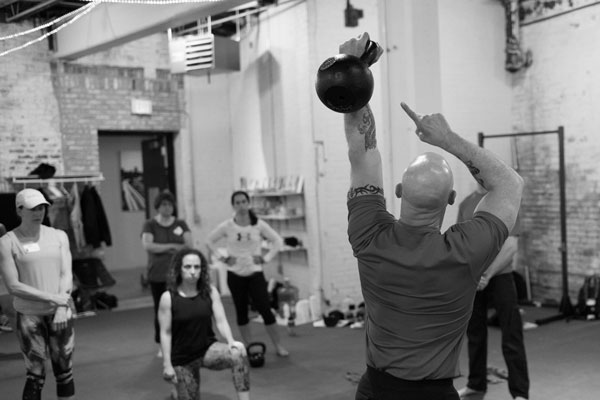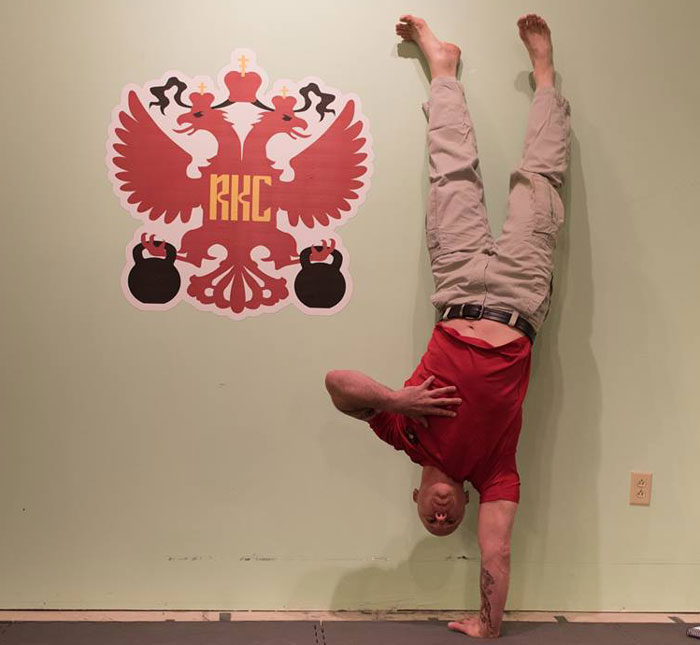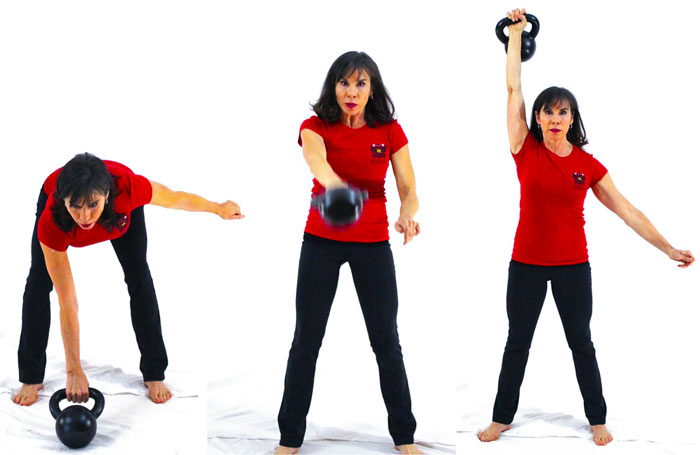
What’s the first thing you think of when preparing for the RKC? Most people instantly think of the dreaded SNATCH Test! It’s understandable—after all, the RKC Snatch Test is a test of a candidate’s conditioning, and how well they’ve trained to complete 100 snatches within 5 minutes with the appropriate kettlebell for their weight class. It is meant to be a challenge. Everyone will agree, you have to earn your RKC—it’s not just given away to anyone who attends an RKC workshop.
So, it’s no surprise that most of the questions and information out there about preparing for an RKC workshop are focused on how to successfully sail through the Snatch Test. As a Master instructor who has seen thousands of Snatch Tests and who has tested the skills of more RKCs than I can count, I can tell you most people are focusing on the wrong thing in their RKC prep!
I always remind candidates that the Snatch Test is not the same as the Snatch Technique Test. The Snatch Test examines the mental and physical conditioning of the candidate. The Snatch Technique Test is all about technique—so each rep should be as perfect as possible. We let a fair amount of sloppy form pass with the Snatch Test because it is nearly impossible to perform 100 PERFECT reps within 5 minutes. But, we DO expect 5 perfect reps on each side during the technique test.
So, if someone has focused all of their preparation on pounding out 100 reps without any attention to the technique of the movement, then they could be in for a surprise if they fail the Snatch, Swing, or Clean Technique Tests. Which brings me to the point of this article; your preparation should be all about the basics—like the swing!
Before their RKC workshop, many candidates think their swing is pretty good. But, nearly everyone soon learns that they had “leaks” in their swing technique! And when the extra pull of the arm to the overhead lockout for the snatch is added, many candidates lose their hips, or their breath since with bad technique, the snatch can become a back and shoulder pull, instead of a hip-driven exercise.
My Advice:
Practice all the skills, work on your volume and conditioning using heavy swings and practice your snatch and cleans with a focus on perfect form. Develop your pressing and squatting strength. Spend a lot of time working on the Get-Up—starting with lighter kettlebells and then increasing the load to your snatch test size kettlebell. Last but not least, work on your mobility and flexibility! You will not pass the RKC if you have neglected your movement skills!
The best way to ensure you are training and performing the exercises correctly is to attend an HKC Workshop as part of your prep—and/or work with a local RKC Instructor to keep you on track.
Attempting to use YouTube as your “teacher” will give limited to negative results. Anyone who has ever attempted to teach someone how to hinge and swing knows, this is a very difficult movement for many people and it is very easy to cheat—without even knowing it!
Below, I will outline a very simple program template. It is a general guideline that you will need to adjust for your individual needs. If you are working with an RKC, they will no doubt design a specific program with you in mind.
How much time should I give myself to prepare for an RKC?
Generally, if you have not been certified as an HKC, we recommend spending six months to a year preparing for the RKC. If you are HKC certified, allow for three to six months.
This may seem like a lot of time, but remember, in order to train safely and build up your overall conditioning you will need plenty of time to push hard and rest. At every RKC workshop, there are always people who have needed to postpone their attendance due to injury during their preparation training.
Spend 3-4 days each week on swing and technique practice. Alternate days of heavy two-hand swings with single arm work with a snatch size or one size lighter kettlebell. At first, keep the volume of your cleans and snatches low. As your technique and conditioning improve, increase your reps. The get-up can be used as a warm up, active rest, and as an exercise to practice with load.
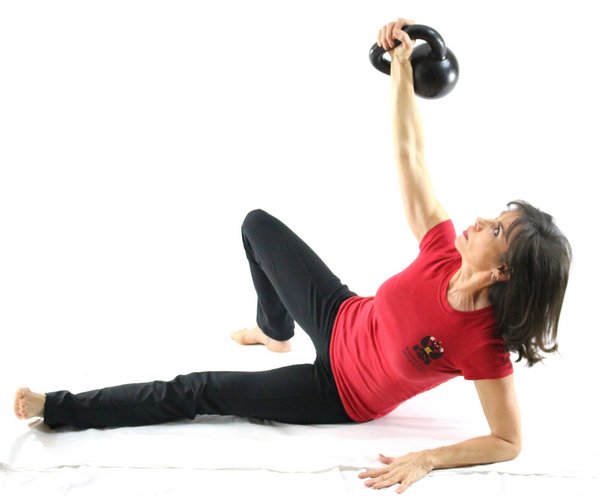
Only attempt the full five minute Snatch Test after a full month of consistent training. After that first month, perform the full Snatch Test once a week at most.
At about 4-6 weeks out from your RKC Workshop, start peaking your intensity. Then at or within 2-3 weeks out, taper down to focus on general conditioning with lots of rest. You should also continue attempting your Snatch Test weekly and continue to practice your skills. For the final week before your RKC, you should focus on basic swings. It is important to rest and eat well during the last five days before your RKC Workshop. You will need all your energy and focus to make it through the weekend.
Hand care should be addressed from the VERY beginning of your training. Keep your calluses trimmed, filed and moisturized. Use as little chalk as possible, too much chalk can cause your calluses to tear. If necessary, use some thin hand protection—but only during your snatch and clean practice.
Each workout should begin with mobility and movement practice and should end with flexibility and stretching. The biggest weak link we see with RKC candidates is a lack of good hip and shoulder mobility. In fact those mobility weaknesses are the biggest reasons for failing the snatch, get up, press and squat!
Your rest days should be active. Continue to work on your mobility and flexibility as well as any other corrective drill or foam-rolling you need on your rest days.
Example Preparation Plan:
Day One:
- 30 seconds work/rest intervals: heavy two-hand swings. Build up to 15 minutes total.
- Get-up practice: 5–10 minutes of alternating get-ups.
- 3 sets of 8-10 goblet squats or single kettlebell rack squats with your Snatch Test size kettlebell.
- Kettlebell carries: 30 seconds for two sets each arm (single kettlebell), then double kettlebell carries for 2 sets of 30 seconds.
Day Two:
- Press ladders (start with a kettlebell you can press at least 5 times). If the 1-2-3-4 ladder pattern is easy, then you chose a kettlebell that was too light. Stop if you can’t make each rung with good technique. If you can add a fifth rung to the press ladder, go ahead.
- 3 sets of 5 double kettlebell front squats. Pick a pair of kettlebells which are challenging, but still allow you to complete the sets with proper form.
- 10 L/R for 10 sets single-arm swings with a kettlebell snatch size or one lighter. Rest as needed between sets.
Day Three:
- 5 sets of 15-20 double kettlebell swings with heavy kettlebells (rest as needed between sets).
- Practice snatches for 5 reps L/R for 5 or more sets. Use a lighter kettlebell or fewer reps or sets if your technique slips or if you are banging your forearms.
- Practice cleans for 5 reps L/R for 5 sets. Focus on good technique. Use a lighter kettlebell, or fewer reps or sets if your technique slips or if you are banging your forearms.
- Hardstyle push-ups 5-10 reps for 2-3 sets (monitor your technique, drop reps or sets or drop down to your knees if your technique slips)
Day Four: Snatch test practice
Option 1: If you are already comfortable using your snatch size kettlebell, try performing as many reps within 5 minutes as possible. Keep count, and try to get closer to reaching 100 reps each week.
If you are not yet comfortable using your snatch size kettlebell, choose one that is one or two sizes lighter and try the Snatch Test with it. Once you’ve reach 100 reps within 5 minutes, move up to the next size kettlebell.
Option 2: Snatch for 50-60 reps in 10 minutes (rest as needed) with a heavier than snatch size kettlebell.
Option 3: Try 2, 3 or 4 minute snatch tests with 40, 60, 80 reps with your snatch size kettlebell if the 100 snatches in 5 minutes is too hard. Slowly work up to the full 100 reps in 5 minutes.
Practice get-ups with a light kettlebell, breaking the movement into sections, and repeating the transitions. Spend extra time in the kneeling windmill position and during the transitions up and down.
Finish with bent-over rows, 6-8 reps for 3 sets with a light kettlebell focusing on keeping the shoulder away from the ear and the lat engaged during the movement. Or practice the variety exercises in the next sentence.
Practice the following variety exercises either on a separate day or at the end of days 1, 2, 4: single-leg deadlift, HardStyle push-ups, kettlebell carries, lunges, bent-over rows etc.
***
Andrea Du Cane is a Master RKC Kettlebell Instructor, CK-FMS, CICS, and RIST, ZHealth certified, she has a BA in Psychology from the University of Minnesota and is also a Pilates instructor. She is the author of several books and dvds including The Ageless Body, The Kettlebell Boomer, and The Kettlebell Goddess Workout. She has over twenty years of aerobics, weight training and fitness experience, with an additional background in… Read more here.
